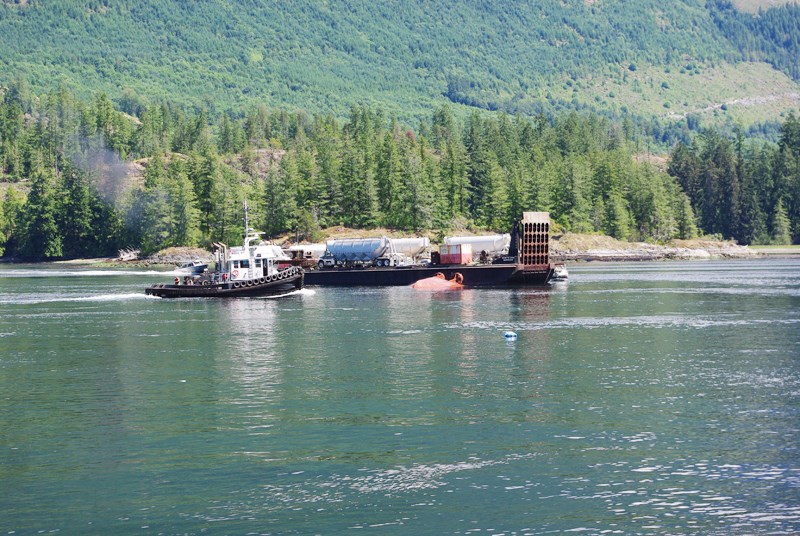In just a few days, the clip had been viewed more than 112,700 times. A similar video was posted to Youtube in April 2012 by the Transportation Safety Board of Canada, and was viewed 4,406,359 times since then.
The incident depicted took place on July 19, 2009. At the time, Coast Reporter reported that the four men onboard the 13-metre North Arm Venture were rescued, and two had minor injuries. One of the crewmembers had been able to escape after initially being trapped belowdeck, and a nearby kayaker helps him board the barge."The accident occurred around 12:50 p.m., roughly 40 minutes before the tide was due to change," the report reads. "When the tide changes, Sechelt Inlet seawater is forced through the narrow channel creating very strong currents, huge swells and other potentially dangerous water features. The tidal increase can be three metres high and force 200-billion gallons of water up to speeds of 32 kilometres per hour through the narrows."According to the TSB report of the incident, the tugboat was towing a barge loaded with fuel and deck cargo from Toba Inlet to Sechelt Inlet when it girded and capsized while making a turn to port at the entrance of Sechelt Rapids.The vessel suffered no hull or structural damage. However, electronic navigation equipment, wiring, and engineering machinery were damaged beyond repair.
"There was a small release of diesel during the righting of the vessel. This was contained and later removed. A subsequent shoreline assessment conducted by the Coast Guard found no traces of marine pollution," the report states.
The TSB also noted the position of the crewmembers during the incident, and lack of personal floatation devices used."Although the absence of these precautionary measures were not contributory factors, good seamanship dictates that such measures be taken when entering a hazardous area in order to reduce the operational risks. Furthermore, given that the tug and barge remained connected, the watertight openings could not be conclusively identified as causal to the capsizing; however, the absence of this precautionary measure precluded any possibility of the tug righting itself."
Since then, the company that owned the vessel amended emergency response plans to include guidelines on what to do in the event of capsizing.



